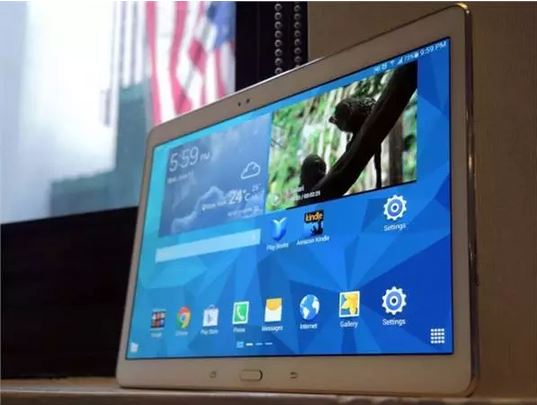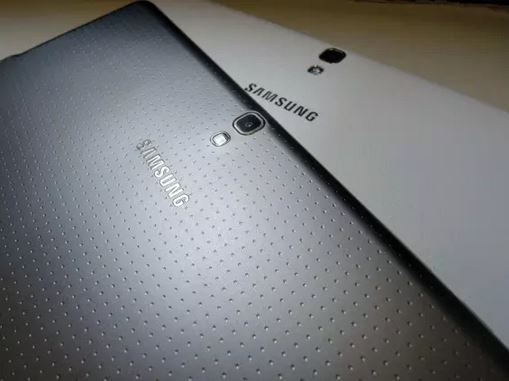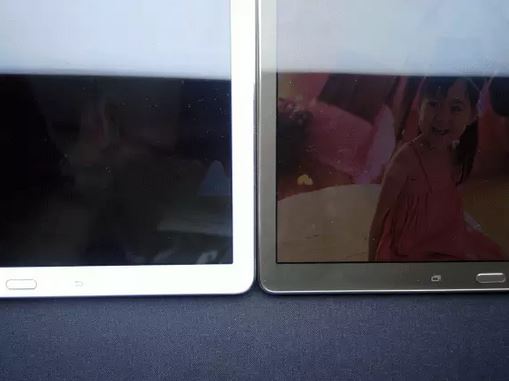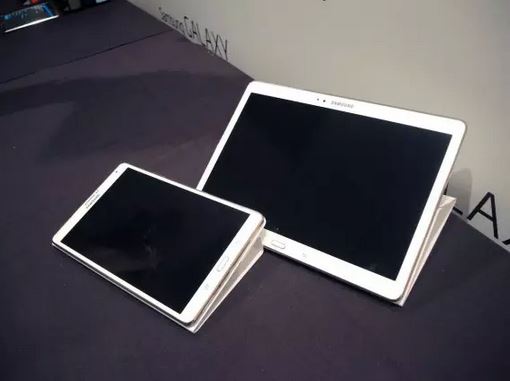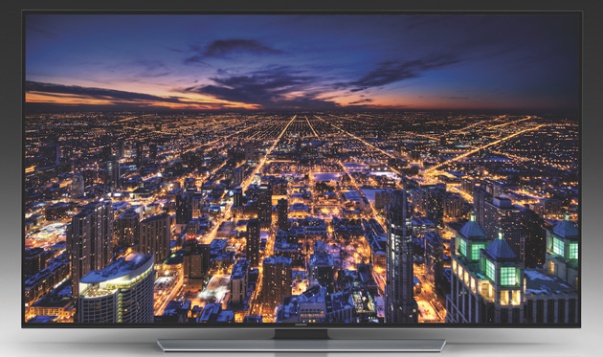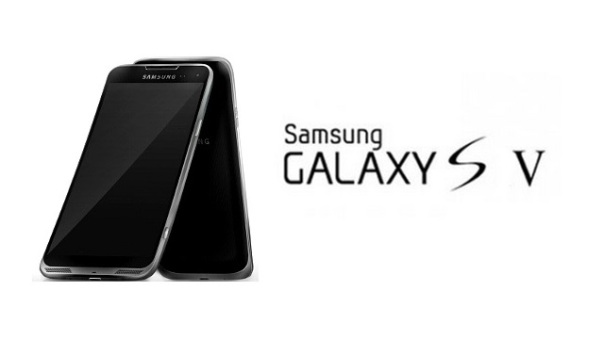Blog Archives
Samsung’s new iPhone-bashing ad is more true than Apple wants to admit [Watch]
Bashing the iPhone has been good business for Samsung, which has regularly run hugely successful ad campaigns that roast iPhone fans for being mindless sheep. Not one to mess with a winning formula, Samsung is at it again with a new ad called “Wall Huggers” that ridicules the iPhone’s inferior battery power and shows several iPhone fans sitting by walls at an airport to make sure that their devices don’t quickly get drained of battery life.
Unfortunately for Apple, there’s a good deal of truth to this. Over the last year, multiple battery test studies from PCMag, and LaptopMag have all found that flagship phones from Samsung and HTC get significantly higher overall battery life than the iPhone. In fact, looking at the Which? study that specifically examined battery life for Internet use, we can see that the iPhone 5s was behind every other major smartphone released last year, including the Galaxy S4, the HTC One, the BlackBerry Z10 and the Nokia Lumia 1020.
This is a potentially important issue that Apple might want to pay attention to, particularly because surveys of prospective buyers have repeatedly shown that battery life is one of the single most important things people look for in a smartphone. Although no company has been successful in marketing their phones’ battery lives as a key selling point so far, we wouldn’t be surprised if Samsung can pull it off.
Hands-on preview: Samsung Galaxy Tab S
Samsung’s freshly unveiled Galaxy Tab S tablets strutted their stuff on stage at Madison Square Gardens, showing off their pixel-packed screens and wafer-thin design to thousands of gadgeteers.
We spent some time analyzing both of Samsung’s flagship 10.5in and 8.4in Galaxy Tab S models. Here’s what we made of them:
SUPER-SLIM AND PREMIUM(ISH):
The Galaxy Tab S has the same design theme as the Galaxy S5, which is apparently called ‘modern flash’. While we’ve got no idea what that is exactly, we do know that the perforated plastic back of the Galaxy S5 is back and bigger than ever, gracing the rear of both Galaxy Tab S models in two colours – Titanium Bronze or Dazzling White.
While the S5 has been criticised for its less premium build, the Galaxy Tab S actually feels better in the hands than its smartphone cousin and its build feels rock solid – rigid with no flexes or creaks to be found.
The back offers reassuring grip without feeling rubbery, and its faux brushed metal banding which surrounds the body managed to fool both our fingers and eyes.
It still doesn’t match the build quality of the iPad Air or Xperia Tablet Z2, mind, but it’s a solid step forward nonetheless.
Both Tab S devices are incredibly thin at 6.6mm – no thicker than five stacked credit cards Samsung tells us – and coupled with their featherlight weight, result in tablets that are very comfortable to hold.
The sides of the Galaxy Tab S are home to the microSD and SIM slots, although the latter will only be present in the LTE versions.
Samsung has unsurprisingly stuck to its capacitive recent apps and back buttons, both of which flank a physical home button. The home button also bestows the Galaxy Tab S with fingerprint-scanning powers – the first for any Samsung Tablet.
Up to three fingers per user are supported, and multiple users can log on with a quick swipe of a finger, as well as quickly paying for items online with PayPal.
A SCREEN THAT’S BURSTING WITH COLOUR:
Both the 10.5in and 8.4in Galaxy Tab S models sport the world’s first made-for-tablet Super AMOLED displays, and Samsung has gone to great lengths to emphasise the benefits of AMOLED over traditional LCD tablet screens.
In person, both screens look incredibly sharp and detailed, thanks to a pixel-packed 2560 x 1600 resolution, and thanks to their AMOLED DNA, blacks were deep, rich and pure. The blacks on an LCD screen look washed out and grey in comparison, and the difference really is night and day.
Colours on the other hand, are a little more subjective. Samsung believes that the richer colours found on an AMOLED display result in more accurate colours.
There’s absolutely no denying the richness of colours on the display of both Galaxy Tab S models. Colours are vibrant and punchy, and coupled with the huge contrast offered by the true blacks and high resolution, results in pictures of fruit that made us want to lick the screen.
We resisted, don’t worry.
However, purists will find the rich colours on the Tab S screens to be over-saturated and unrealistic. Sure, glowing fruit looks juicy and delicious, but if you prefer a more realistic representation of the real world, the more muted colours of an LCD will be more up your street.
Thankfully, you can change the display mode in the settings to provide more realistic colours, and if you’re a colour purist, the Basic mode will sort you out. Colours pack less of a punch and you’ll be rewarded with more accurate representations of the real world.
That’s not to say the vibrant colours of the Tab S are a bad thing. It’s all subjective, and the fact that you can adjust the display to suit your taste mean that everybody wins.
The Galaxy Tab S uses an Adaptive Display mode which automatically adjusts to your surroundings. In normal use, it leans towards the over-saturated side, but it will come in handy in odd lighting conditions as it automatically adjusts the white balance of the display, depending on the ambient light.
If you’re in a coffee shop with overly warm yellow light for example, the Tab S automatically adjusts to a cooler, bluer white to compensate for it. The demo above shows the difference between the white levels under warm and cool lighting conditions.
One benefit AMOLED displays offer over their LCD counterparts is better readability in sunlight.
Samsung set up a demo where a light box (brighter than the light of a thousand suns which painfully seared our retinas) shone over AMOLED and LCD displays.
The differences are vast, and this will be a big plus for users who are tapping away on their screens outside or under bright light.
POWER, CAMERA, AND OTHER EXTRAS:
We weren’t able to test out the power of the Galaxy Tab S models, but opening apps and menu transitions seemed fast and fluid. The Galaxy Tab variants will land either with Samsung’s own Exynos 5 processor or Qualcomm’s Snapdragon 800 offering. We’ll have to wait for our full review to put them through their paces, but first impressions are promising.
We couldn’t put the 8MP camera through its paces either, but the few quick photos we did take looked a little grainy. Given that cameras are a very low priority for tablet users (or at least, they absolutely should be), this shouldn’t be anything to worry about.
Android KitKat 4.4 is of course skinned with TouchWiz on both tablets, and it brings with Samsung’s software tweaks, including a newer multi-window function which lets you drag and drop data from one window into another.
Samsung demoed dragging Google Maps directions directly into a live phone call, which is a genuinely useful feature that we’d love to see other manufacturers adopt.
With Kids Mode, a youngster-friendly interface with various apps to keep little hell raisers out of trouble, for at least a few minutes.
One incredibly useful feature that we sadly couldn’t test was SideSync 3.0, which lets you play games installed on your smartphone on the larger Tab S screen. You can also answer calls on your Tab S, even if your phone is charging in another room.
The only downside is that this only works with Samsung’s own Galaxy devices.
Samsung is also launching Papergarden – an app with quality interactive magazines on offer, optimised to fit the display of the Tab S.
ACCESSORIES:
The Tab S tablets have three cases, all of which click into two circular rear click locks, called ‘Simple Clickers’. It’s Samsung’s answer to magnetic covers, and while a little fiddly, it does offer a stronger connection.
The Book Cover is a thin faux leather/suede cover which wraps around the Galaxy Tab S tablets and lets you prop them up in three different viewing modes – Touch mode for flat surfaces, an angles Typing mode and a Viewing mode for watching videos.
The Simple cover sports a similar design, but only protects the screen, making it an even thinner choice.
The Bluetooth Keyboard accessory will appeal to you if you’re looking to squeeze a little productivity out of your tablet. It props the 10.5in Tab S in place and securely clips it shut to protect it when not in use.
The dummy unit we saw didn’t have real keys so we can’t vouch for the typing experience, but it seemed large enough to be comfortable.
INITIAL VERDICT:
The Galaxy Tab S is Samsung’s flagship tablet, at least until the inevitable new AMOLED Note 10.1 comes along, and our initial impressions are positive.
The build isn’t as premium as many would like, but it’s definitely an improvement. It’s solid and well-built, and its screen offers deliciously deep blacks and punchy colours, along with the option to tweak it to your own taste.
Stay tuned for our full in-depth review of the Galaxy Tab S to see if it’s got what it takes to be the best tablet in the world.
Samsung lets you make apps for Tizen-based TVs that don’t exist yet
The open source Tizen platform may only just be making its way on to wristwear, but Samsung has much bigger plans… in a very literal sense. The company is releasing a developer kit that will let you create apps for Tizen-based smart TVs, including software that supports hand gestures, mobile device pairing and voice commands. And unlike some TV development tools, you won’t need a real set to try things out; you can replicate many core features from the comfort of your PC.
The kit should be available from Samsung’s Developer Forum in early July if you’re eager to start tinkering, or just want to try the resulting apps. However, you’ll be waiting considerably longer for the hardware — to date, Samsung hasn’t said when it will release TVs running Tizen. While the software is a sign that these sets are getting close, the kit is mostly useful for aspiring coders who want a head start.
Samsung Galaxy Tab S 10.5, Galaxy Tab 8.4 leaked in multiple press renders
The earlier rumored Samsung Galaxy Tab S 10.5 and Galaxy Tab 8.4 have been leaked, again. This time we have a small set of official press renders, compliments to EVleaks.
As we’ve reported before, aside from AMOLED screens, devices in the Tab S series will also come with a fingerprint sensor a la Galaxy S5, making them “better prepared” for the enterprise environment where security matters more than anything else.
In addition, both the Galaxy Tab S 10.5 and Galaxy Tab 8.4 also have a textured back (again like the Galaxy S5) and two dots on the back used for connecting to Sammy’s forthcoming book cover. Rest of the specs include a 2560 x 1600 pixels display, Samsung’s octa-core Exynos 5420 SoC, 3GB of RAM, IR blaster and at least 16GB of expandable storage.
Samsung will unveil the new Galaxy Tab S devices on June 12 in an event in New York.
Samsung partners with hellofood delivery service.
Online food ordering service Hellofood, founded by Africa Internet Holding (AIH), has announced a partnership with Samsung at the launch of the new Samsung Galaxy S5 in Lagos.
Using Hellofood could not be simpler: you just need to download the app, search for your favourite restaurants in the area and place an order. Your order will be delivered to your doorstep and you can pay cash on delivery to make the process even quicker and simpler. As part of the Galaxy Gift Package, Hellofood has been selected as one of six apps that will be pre-installed on all Galaxy S5 devices for its users.
Emmanouil Revmatas, Samsung West Africa Director, endorsed Hellofood as “the fastest way to order food online from your favourite restaurants” and praised the simplicity of the service.
According to the founders, Hellofood has become the most popular food delivery app on the continent and this latest partnership demonstrates the huge consumer demand for high-quality and easy-to-use apps. Having been operational in Nigeria for just under 18 months, Hellofood is already working with over 300 restaurants across several cities, including Lagos, Abuja and Port Harcourt.
“This latest partnership with Samsung is very exciting for us”, said James Gibson, Managing Director of Hellofood Nigeria. “Being featured within the Galaxy Gift Package will help us to extend our reach to an even wider audience, and we look forward to being able to provide a range of new customers with a convenient and easy way to order food online.”
This latest partnership follows a global deal with Nokia to make the Hellofood app available on Nokia smartphones, as well as extensive pre-installation deals with 4 of the 5 top network operators in Africa. Hellofood is fast redefining the food delivery industry as a mobile-driven experience that is continuing to grow at an impressive rate.
Download hellofood for iOS here
Download hellofood for Android here
An Amazon Smartphone Is Trouble for Google, Not Apple or Samsung
Amazon is reportedly working on a smartphone for release this fall. With a smartphone, Amazon will enter a crowded and competitive market where Apple and Samsung dominate.
Amazon has already gone after Apple with the Kindle Fire and Fire TV to compete with the iPad and Apple TV, respectively. Although a smartphone from Amazon has the potential to take away potential customers from Apple’s most important product, the iPhone, it likely won’t pose any more of a threat than Samsung or any other Android phone maker. In fact, the company that could get hurt the most from an Amazon smartphone is Google.
Best price approach
Google has a hardware business of its own. Its Nexus line includes tablets and smartphones that are typically sold at very low margins with the goal of making up revenue and profit on the back end through advertising and content sales.
As a result, Google’s devices are often considered a great value for the price. The Nexus 5 smartphone received high marks when it was released last year.
Google isn’t the only company that can do this trick, however. Xiaomi, the Chinese smartphone manufacturer, has had tremendous success selling its high-end smartphones at mid-range prices. The company sold 18.7 million smartphones last year, and it brought in revenue of $5.22 billion. The company expects to sell about 40 million phones this year.
Google hasn’t seen nearly as many sales of its Nexus line. Its tablets, in particular, have had a tough time selling. An estimate by industry analyst Benedict Evans from last year put the number of Nexus tablets in use around 7.5 million. One factor for the depressed sales may be Amazon’s presence in the market.
Not only is Amazon able to sell its tablets at a competitive price like Google, it also has the benefit of being a very popular place for consumers to buy things — like tablets. Although Google has a large web presence itself and does a great job of advertising, it hasn’t been able to turn that into sales of its own products the way Amazon has.
A bigger risk
Losing sales of its smartphone line isn’t that much of a problem for Google in the big picture. It still dominates web search and advertising — its core business. Android, however, has become a large part of its business, and Google is slowly seeing its open-source free distribution of the software come back to bite the company.
Amazon uses Android as the basis for its Fire OS, but tweaks it to use Amazon’s own app store and sell other content like e-books. In this way, Google sees practically no benefit from the Android OS on Kindle tablets. The same is true of Xiaomi smartphones and any Android phone in China, where Google is locked out.
An Amazon phone is a further threat to Google’s Android and the company’s ability to fully monetize the platform. If Amazon is successful at establishing its own Android fork in the smartphone market, it could be all the impetus Samsung needs to go forward with Tizen-based phones.
Tizen is Samsung’s own mobile OS that it’s been developing for some time and features in the second generation of the Galaxy Gear smartwatch. It notably replaces the Google Play store with its own Tizen app store, much like Amazon has its own app store. Tizen would allow Samsung to better control its most important segment as well as generate more revenue for the Korean electronics maker.
Considering Samsung makes more than one-third of all Android smartphones, losing the revenue stream from Samsung users would be a big blow to Google.
Amazon really doesn’t care about the competition
Amazon doesn’t really concern itself with the competition. A smartphone would be aimed at selling more digital content just as its previous efforts in consumer electronics have.
Apple, too, has become a digital content seller in recent years. The iTunes store totaled $9.3 billion in sales last year. The biggest driving factor, however, has been its differentiated hardware, not the proliferation of a nearly free OS. Amazon poses only a minor threat to Apple compared to the potential damage it could do to Google if Samsung copies its success with an Android fork.
Download our eMerchantNG Android App here…we look forward to your feedback to help improve the BETA App.
If the App doesn’t install, please go to your “Settings”, “Security”, under “Device administration” tick ”Unknown Sources” and re-install again.
Thank You.
Android Phone Comparisons: Samsung Galaxy S5 vs Samsung Galaxy Note 3
This is an interesting comparison of two Samsung devices – the New Galaxy S5 versus its big brother, the Galaxy Note 3. The Note 3 in November and was certainly better than last year’s Galaxy S4 by a long shot – it had better everything in it and added the S-Pen on top of it all. So let’s take a look at the new Galaxy S5 and see how it stacks up to the five-month old Galaxy Note 3. Other than display size, these devices are really not so different, and why should they be – Samsung generally showcases certain attributes in their current models that find their way onto the next generation of smartphones, for instance, the Galaxy Note 4 will most likely use the 16MP camera found on this Galaxy S5, just like the faux leather backing of the Note 3 found its way to the Galaxy S5…well sort of.
Take a look at the specifications below . Phablets is a term thrown around too freely as far as I am concerned – to me, Samsung has defined that market segment and just because a device has a large screen doesn’t make it a phablet in my book if it does not have the productivity software to go with it. Loving the device you are currently using does not make you a fanboy of that brand – a fanboy is someone who refuses to accept the fact that there are other good devices out there, made by other companies that may actually be better than the one that you are using.
Summary
Another surprise for me – the new Galaxy S5 is a solid offering in this years’ flagship, but the Galaxy Note 3 has close to the same processor, more RAM, a standard 32GB of internal storage with room to expand on a microSD card, a larger display (could be a minus for some users), better multitasking, the S-Pen and all the productivity software that comes available for it, excellent battery life, good, solid camera, they both have USB 3.0, and even better speaker placement on the Note 3. The Galaxy S5 does have a slightly better screen technology and slightly better processor, but not enough of a difference to dethrone the Note 3.
The Note 3 does not have a fingerprint scanner or Heart Rate Monitor like the Samsung S5, but I do not consider those features a necessity or enough to win this comparison. One of the biggest things that the Galaxy S5 has going for it is 4.4.2 KitKat, but the Note 3 will soon have that as well. The Note 3 is more expensive as Samsung tries to hold down the price of the new Galaxy S5, but only you can decide if the extra money is money well spent. If you want a smaller device and do not need the productivity of the Note 3, then the Galaxy S5 should be able to handle your needs, but for me, the Note 3 just makes more sense.
Download our eMerchantNG Android App here…we look forward to your feedback to help improve the BETA App.
If the App doesn’t install, please go to your “Settings”, “Security”, under “Device administration” tick ”Unknown Sources” and re-install again.
Thank You.
Samsung Wants to Leave Android According to Internal Documents Revealed During Apple Lawsuit
On the heels of Samsung’s flagship Galaxy S5 Smartphone launch, it is no secret in the rumor mill that Samsung wants out of Android – biting the hand that fed and fatten them into one of the largest manufacturers of smartphones in the world. But Samsung wants to run and control everything, and can you really blame them – who doesn’t want to run the entire show. Samsung may badmouth Apple at every turn, but in reality, Samsung envies Apple’s control over the design and manufacturing of both the software and hardware. Samsung makes some great devices, but they are slaves to the Android O/S and rules that Google would like them to follow – and Samsung does not like to be told what to do…hence, they are pushing their Tizen O/S.
There is a problem trying to get the truth out of a big corporation, all we hear about them is what their press department wants us to hear. Unless you have been living under a rock these past couple of years, you know that Apple and Samsung have been locked up in many court battles. One of the side benefits to us is that documents are subpoenaed and some are made public – sometimes information is ‘leaked’ out giving us a glimpse into the thought process these companies are going through. Last week Samsung released some documents that showed what Apple really thinks about its Android competition. Then, this week, Apple returned the favor and released evidence that Samsung’s tablet sales were less than they had claimed.
Internal documents leaked today allow us to delve into Samsung’s thought process during the period 2011 – 2012 when they were written and here are a few of the highlights:
Samsung’s biggest concern is Apple and how they could slow down their growth and stated, “Future success is dependent on blunting Apple.”
The second observation was that Samsung is not a team player – they do not consider HTC and other Android manufacturers as an ally.
The third bit of news is that Samsung admitted that their biggest problems were that they were perceived as a “weak brand and low quality.” There were documents that stated that carriers were more than three times likely to steer their customers to an iPhone than a Galaxy device.
Lastly, and most importantly, even though the growth of Samsung’s Galaxy line of phones was due to the Android O/S, that the company had been planning for years to rid themselves of Android and use its own O/S.
If Samsung decides to do this, it could have a huge impact on the Android ecosystem and on Samsung’s sales figures. Up until now they have used their Tizen O/S very sparingly in a few tablets for testing and on their Gear smartwatches. If Samsung really wants to abandon Android and make a launch of their own O/S they would need the life blood of an O/S – applications to run on their devices. This will certainly be something to keep our eye on over the next couple of years.
Let us know what you think about Samsung leaving Android and developing their own O/S – what do you think the impact on the Android ecosystem would be and on Samsung sales if this were actually to take place…we would love to hear your opinions.
Download our eMerchantNG Android App here…we look forward to your feedback to help improve the BETA App.
If the App doesn’t install, please go to your “Settings”, “Security”, under “Device administration” tick ”Unknown Sources” and re-install again.
Thank You.
[Weekend Poll] Did / Will You Buy One Of The New Samsung Gears?
Samsung launched the Galaxy S5 in 125 countries yesterday, and launching alongside it were also the company’s new trio of smartwatches – Gear 2, Gear 2 Neo, and Gear Fit.
I have to say, that curved OLED display is downright striking. This may be the most fashionable… thing Samsung’s ever produced. How useful is it? Well, you’ll have to wait for my review on that one.
The Gears seem almost destined to let down hardcore Android users, though, because just as Samsung was gearing up to launch its new smartwatches, Google went and announced Android Wear. Not to mention that Samsung specifically moved away from Android with the new Gear devices, as they all run the Tizen OS. (Tee-zen? Ty-zen?)
Android Wear devices will integrate tightly with things like Google Now, Gmail, Hangouts, Maps, voice search, and other Google services. Wear will also, of course, provide extensible functionality for 3rd party apps.
On the other side of the fence, Samsung’s Gear OS really doesn’t have any tight Google integration, and 3rd party development will happen on Samsung’s terms, with distribution through the Samsung app store. It seems battle lines are being drawn here – Samsung couldn’t have not known Android Wear was coming as the announcement of its new Gear devices drew nearer.
The new Gears aren’t without any teeth, though – they can read your heart rate, count your steps, two of them can store up to 4GB of music for Bluetooth playback, they all have vivid OLED displays, and Samsung’s increasingly powerful S Health app provides solid activity tracking integration right out of the box. But it’s easy to see how Android Wear would have those consumers who are paying attention to the wearables market holding onto their cash for the time being, especially for Motorola’s intriguing (and intriguingly ciricular) Moto 360.
Download our eMerchantNG Android App here…we look forward to your feedback to help improve the BETA App.
If the App doesn’t install, please go to your “Settings”, “Security”, under “Device administration” tick ”Unknown Sources” and re-install again.
Thank You.
High five: Samsung’s best phone gets better
The Good:
Samsung’s Galaxy S5 excels at everything that matters — Android 4.4 KitKat OS; a bright, beautiful display; blistering quad-core processor; and an excellent camera experience. In addition, Samsung’s efforts to streamline its own custom interface and reduce pre-installed bloatware pay off.
The Bad:
The Galaxy S5 is just s small upgrade over the Galaxy S4. The fingerprint scanner can be confusing to use, and the heart-rate monitor is a niche feature at best. In some regions, the Galaxy S5 costs significantly more than rival top-rated handsets.
The Bottom Line:
Subtly improved and smartly refined, the Samsung Galaxy S5 is a superior superphone that hits every mark but the sharpest design.
Here’s why the Samsung Galaxy S5 should grab your attention:
It looks good, it performs very well, and it has everything you need to become a fixture in nearly every aspect of your life. But, like a candidate running for reelection, the GS5 gets where it is today based on experience and wisdom, not on flashy features or massive innovation.
With the exception of a few nonessential hardware and software additions — like the fingerprint scanner and novel heart-rate monitor — and a few design tweaks, you’re pretty much looking at the same phone Samsung released in 2013. The S5 is more of a Galaxy S4 Plus than it is a slam-the-brakes, next-generation device; it makes everything just a little smoother and faster.
The 5.1-inch, quad-core Android 4.4 KitKat machine with a terrific 16-megapixel camera is well worth snapping up. However, it isn’t the only phone worth your time. The gorgeous, all-metal HTC One M8 has a more sophisticated design, better speakers, and greater internal storage for about the same price (32GB versus 16GB). Should you buy the GS5? If you want to go to sleep at night certain that you own the most capable, robust phone, yes.
Download our eMerchantNG Android App here…we look forward to your feedback to help improve the BETA App.
If the App doesn’t install, please go to your “Settings”, “Security”, under “Device administration” tick ”Unknown Sources” and re-install again.
Thank You.
